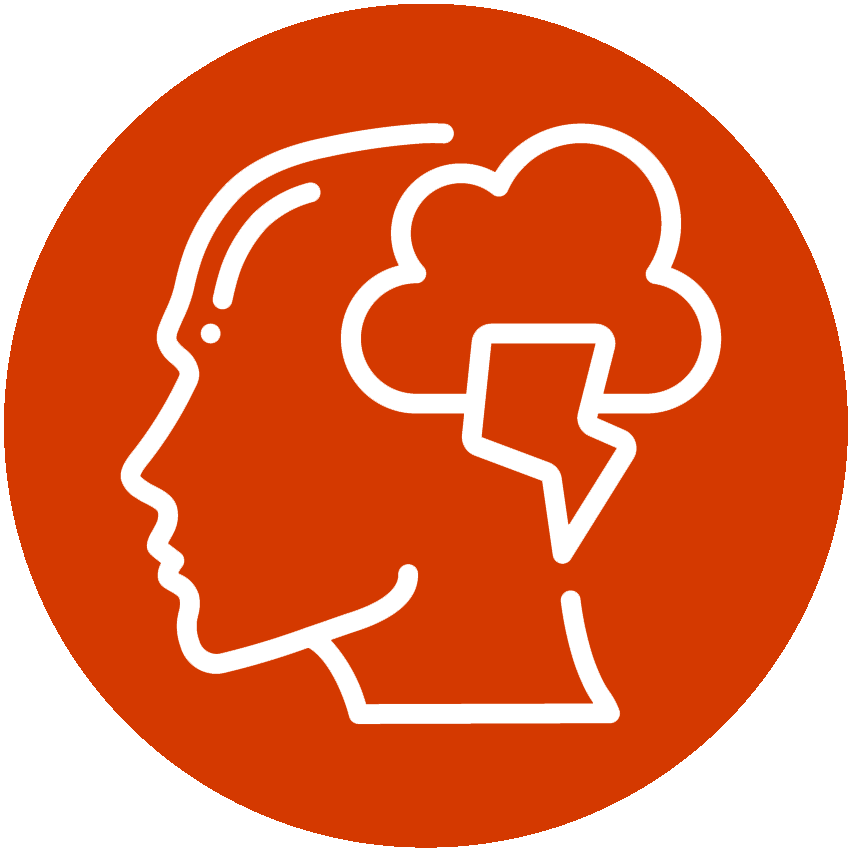Smith-Magenis Syndrome (SMS) is a rare condition that occurs once in every 15-25,000 births. People with SMS have complex needs and behaviours, along with a learning disability that can range from mild to profound. It is a lifelong condition that will always need extra support.
Overview

Smith-Magenis syndrome is a genetic disability due to a microdeletion or mutation on chromosome 17. The major features of Smith-Magenis Syndrome (SMS) include mild to moderate intellectual disability, delayed speech and language skills, distinctive facial features, sleep disturbances, and behavioural problems.
Characteristics
Individuals with SMS are often (but not always) characterised by a short flat head, prominent forehead, broad square face, deep-set eyes, underdeveloped midface, broad nasal bridge, short nose, tented upper lip, and a chin that is small in infancy and becomes relatively prominent with age. These facial differences can be subtle in early childhood, but they usually become more distinctive in later childhood and adulthood. Dental abnormalities are also common.
During infancy quite often there are feeding problems, failure to thrive, weak muscle tone, prolonged napping and lethargy. Then later in childhood and adulthood there can be the development of disturbed sleep patterns (difficulty falling asleep, regular waking throughout the night and sleepiness in the day), as well as behavioural problems.
These behaviour problems can be exhibited in a variety of ways, including frequent temper tantrums, impulsivity, anxiety, distractibility, aggression and self-injurious behaviours including self-hitting, self-biting, and skin-picking.
In addition to the above challenging behaviours, there are stereotypical behaviours including ‘self-hugging’ hand licking and page flipping (“lick and flip”) behaviour, mouthing objects, insertion of hand in mouth, teeth grinding, body rocking, and spinning or twirling objects.
Other signs and symptoms of Smith-Magenis syndrome include short stature, abnormal curvature of the spine (scoliosis), reduced and delayed sensitivity to pain and temperature, possible toileting difficulties and a hoarse voice. Some individuals also have ear abnormalities that lead to hearing loss and also possible vision difficulties including myopia and cortical visual impairment (CVI). Although less common, heart, kidney, liver, and lung defects have also been reported in individuals with Smith-Magenis syndrome.
Scientific Explanation
The syndrome is due to an abnormality in the short (p) arm of chromosome 17 and is sometimes called the 17p- syndrome.
Smith-Magenis syndrome is a chromosomal condition related to chromosome 17. Most people with SMS have a deletion of genetic material from a specific region of chromosome 17 (17p11.2). Although this region contains multiple genes, recently researchers discovered that the loss of one particular gene the retinoic acid-induced 1 or RAI1 is responsible for most of the characteristic features of this condition. Also, other genes within chromosome 17 contribute to the variability and severity of the clinical features. The loss of other genes in the deleted region may help explain why the features of Smith-Magenis syndrome vary among affected individuals. A small percentage of people with Smith-Magenis syndrome have a mutation in the RAI1 gene instead of a chromosomal deletion.
These deletions and mutations lead to the production of an abnormal or nonfunctional version of the RAI1 protein. RAI1 is a transcription factor involved in communication messages between DNA and RNA. The groups led by James Lupski (Baylor College of Medicine) and Sarah Elsea (Virginia Commonwealth University) are in the process of studying the exact function of this gene in relation to Smith Magenis Syndrome.
SMS is typically not inherited. This condition usually results from a genetic change that occurs during the formation of reproductive cells (eggs or sperm) or in early fetal development. People with Smith-Magenis syndrome most often have no history of the condition in their family.
Explanation of SMS through our logo; the sun and moon.

The sun and moon represent the body clock. In SMS the body clock (the circadian rhythm) is flipped. Our children naturally want to be awake at night and asleep during the day. We recognise that our children don’t have a sleep problem; they can sleep anytime, anywhere. It is those around them who have a problem with their sleep. Imagine having a bright and lively child awake in the small hours of the morning wanting to play and be active.
The moon depicts the wonderful and endearing personalities that come with SMS: their bright smiles, the lighting of the way in darkness, that feeling of comfort and ease when you see the crescent moon. The white of the moon is associated with light, goodness, innocence, and purity. All of these relate to the children with SMS.
But then there’s the dark side of the moon, the less pleasant more challenging, colder aspects. Within SMS these can manifest themselves as challenging behaviours, self-injury, aggression, and destruction. There are also the many medical challenges to be faced, hidden from view but nevertheless there in the background.
With the warmth of the sun comes affection. Inevitably they also want to be the centre of the universe as the sun is to our solar system. And when at the centre our children certainly shine. Yellow is the colour of sunshine and is associated with joy, happiness, intellect, and energy which all our children show.
The seventeen solar flares are significant in reminding us that SMS is a deletion or mutation on chromosome 17p11. This is also why we have the 17th of November as our international awareness day.
Blue is the colour of the sky and sea and is associated with depth and stability which our children need. It symbolises trust, loyalty, confidence, and understanding.
There is nothing artificial with the Sun and Moon. These are all-natural wonders that relate perfectly to our children with SMS. See them for what, or who, they are.
So when you look up to the sky, or see our logo, remember our story. If there are clouds making it dark, never forget that the brightness of the sun and moon are only temporarily obscured and waiting to re-emerge.
Information Booklet
Smith-Magenis Syndrome is a complex disability. Each individual will exhibit different aspects of the characteristics and so each family with develop their own ‘coping’ strategies. It is important to get professionals involved early on to provide the family with the support needed. Input from Paediatricians, Speech and Language therapists, Physiotherapists, Educational Professionals, Portage, Social Services, Child and Adult Mental Health Services etc are all very important and a multi-agency approach is vital!
SMS: Guidelines for Parents and Teachers

Our booklet provides a lot of practical helpful advice about coping with all aspects of SMS. It covers sleep, social relationships, behaviours, feeding difficulties, toilet training, dressing, school concerns, behaviour in adulthood, siblings and sources of further help.
You can download a copy (pdf) or purchase a Kindle version at £1.49 through Amazon.
Translations
This booklet has now also been translated into German, Portuguese, and Italian and can be downloaded using the links below. Many thanks to Dr. Alexander Ströher (German), Fernanda Perla (Portuguese), and Xheni Prebibaj (Italian) for the booklet translations.






